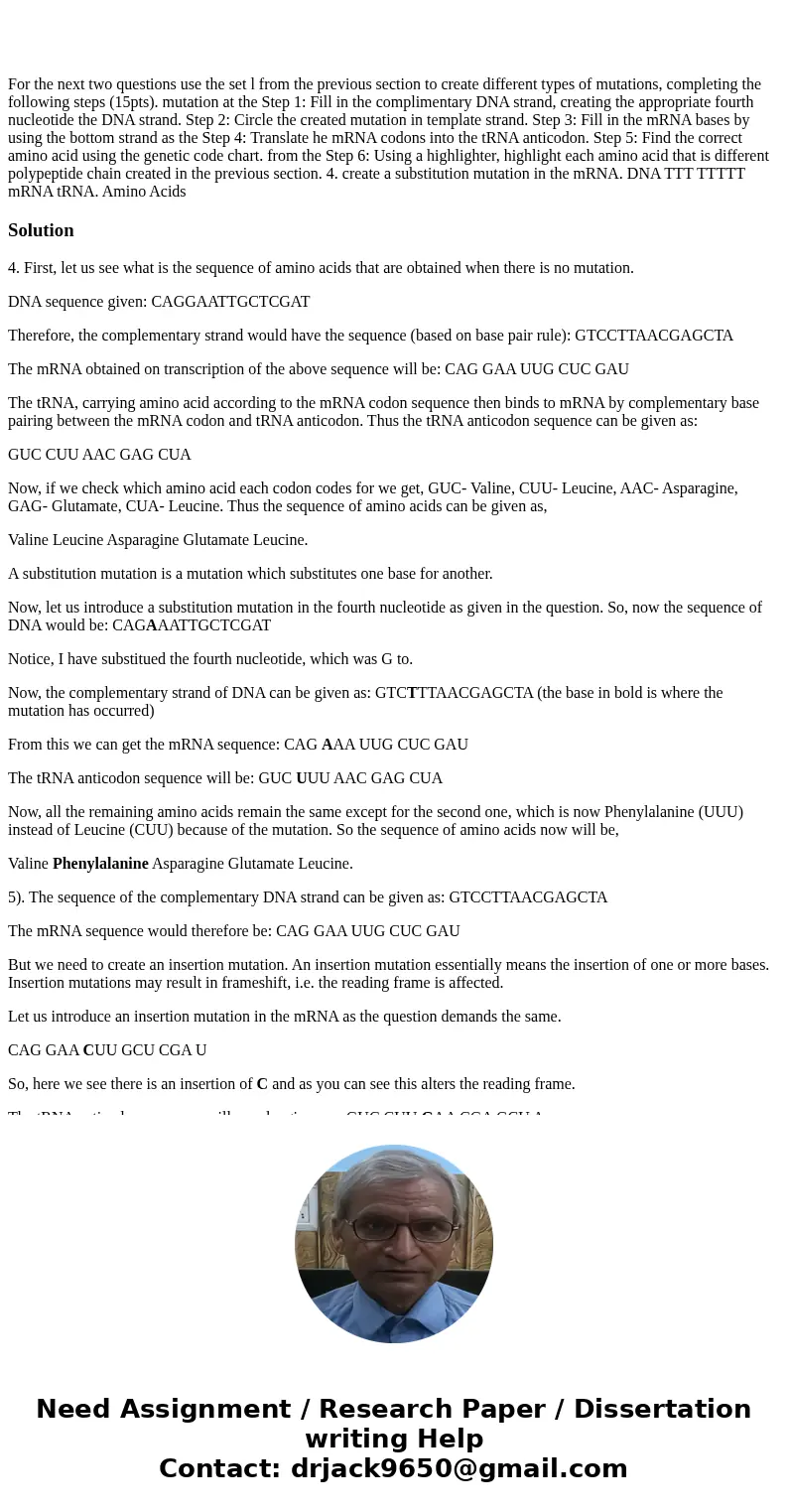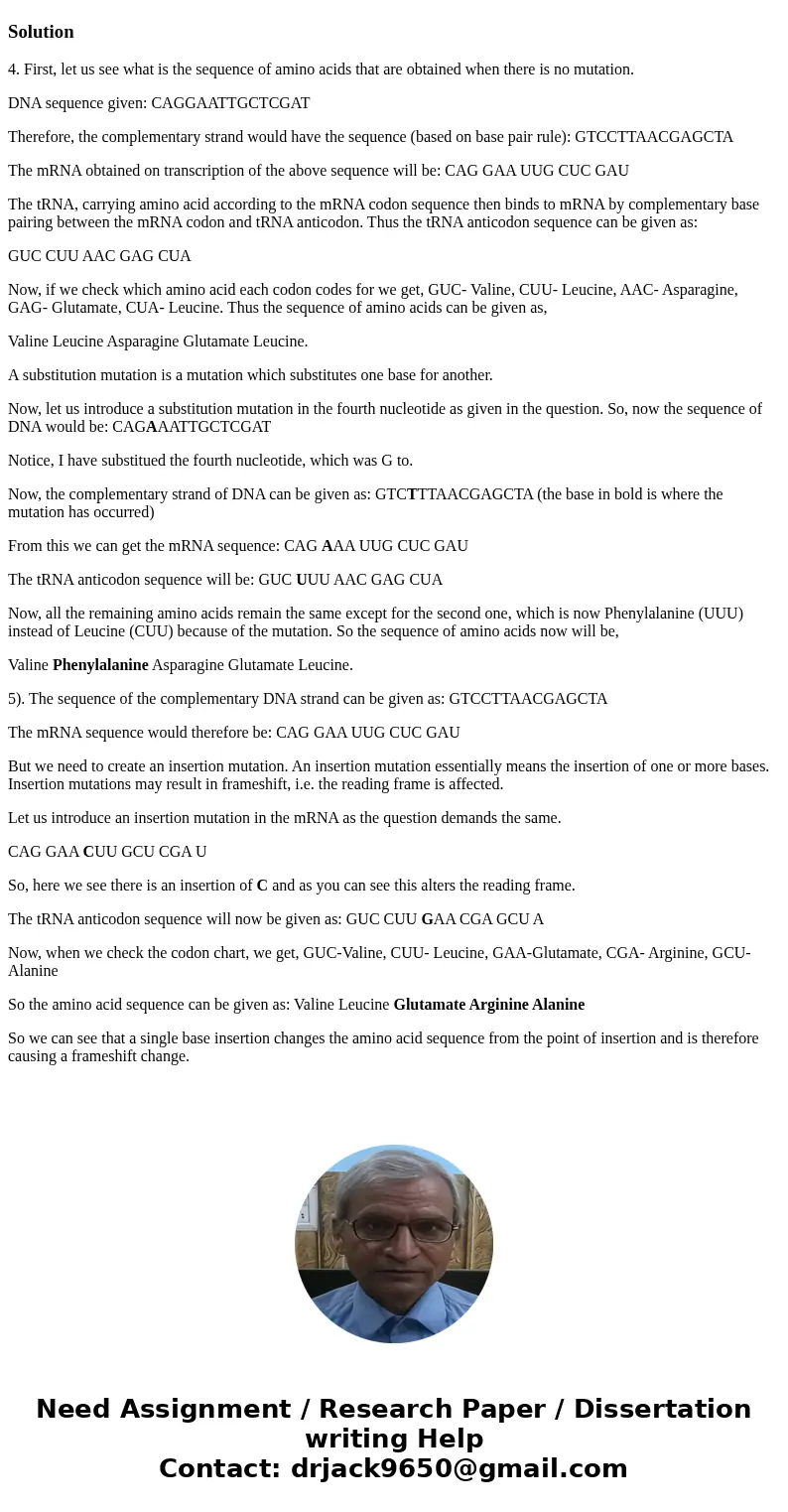For the next two questions use the set l from the previous s
Solution
4. First, let us see what is the sequence of amino acids that are obtained when there is no mutation.
DNA sequence given: CAGGAATTGCTCGAT
Therefore, the complementary strand would have the sequence (based on base pair rule): GTCCTTAACGAGCTA
The mRNA obtained on transcription of the above sequence will be: CAG GAA UUG CUC GAU
The tRNA, carrying amino acid according to the mRNA codon sequence then binds to mRNA by complementary base pairing between the mRNA codon and tRNA anticodon. Thus the tRNA anticodon sequence can be given as:
GUC CUU AAC GAG CUA
Now, if we check which amino acid each codon codes for we get, GUC- Valine, CUU- Leucine, AAC- Asparagine, GAG- Glutamate, CUA- Leucine. Thus the sequence of amino acids can be given as,
Valine Leucine Asparagine Glutamate Leucine.
A substitution mutation is a mutation which substitutes one base for another.
Now, let us introduce a substitution mutation in the fourth nucleotide as given in the question. So, now the sequence of DNA would be: CAGAAATTGCTCGAT
Notice, I have substitued the fourth nucleotide, which was G to.
Now, the complementary strand of DNA can be given as: GTCTTTAACGAGCTA (the base in bold is where the mutation has occurred)
From this we can get the mRNA sequence: CAG AAA UUG CUC GAU
The tRNA anticodon sequence will be: GUC UUU AAC GAG CUA
Now, all the remaining amino acids remain the same except for the second one, which is now Phenylalanine (UUU) instead of Leucine (CUU) because of the mutation. So the sequence of amino acids now will be,
Valine Phenylalanine Asparagine Glutamate Leucine.
5). The sequence of the complementary DNA strand can be given as: GTCCTTAACGAGCTA
The mRNA sequence would therefore be: CAG GAA UUG CUC GAU
But we need to create an insertion mutation. An insertion mutation essentially means the insertion of one or more bases. Insertion mutations may result in frameshift, i.e. the reading frame is affected.
Let us introduce an insertion mutation in the mRNA as the question demands the same.
CAG GAA CUU GCU CGA U
So, here we see there is an insertion of C and as you can see this alters the reading frame.
The tRNA anticodon sequence will now be given as: GUC CUU GAA CGA GCU A
Now, when we check the codon chart, we get, GUC-Valine, CUU- Leucine, GAA-Glutamate, CGA- Arginine, GCU- Alanine
So the amino acid sequence can be given as: Valine Leucine Glutamate Arginine Alanine
So we can see that a single base insertion changes the amino acid sequence from the point of insertion and is therefore causing a frameshift change.


 Homework Sourse
Homework Sourse